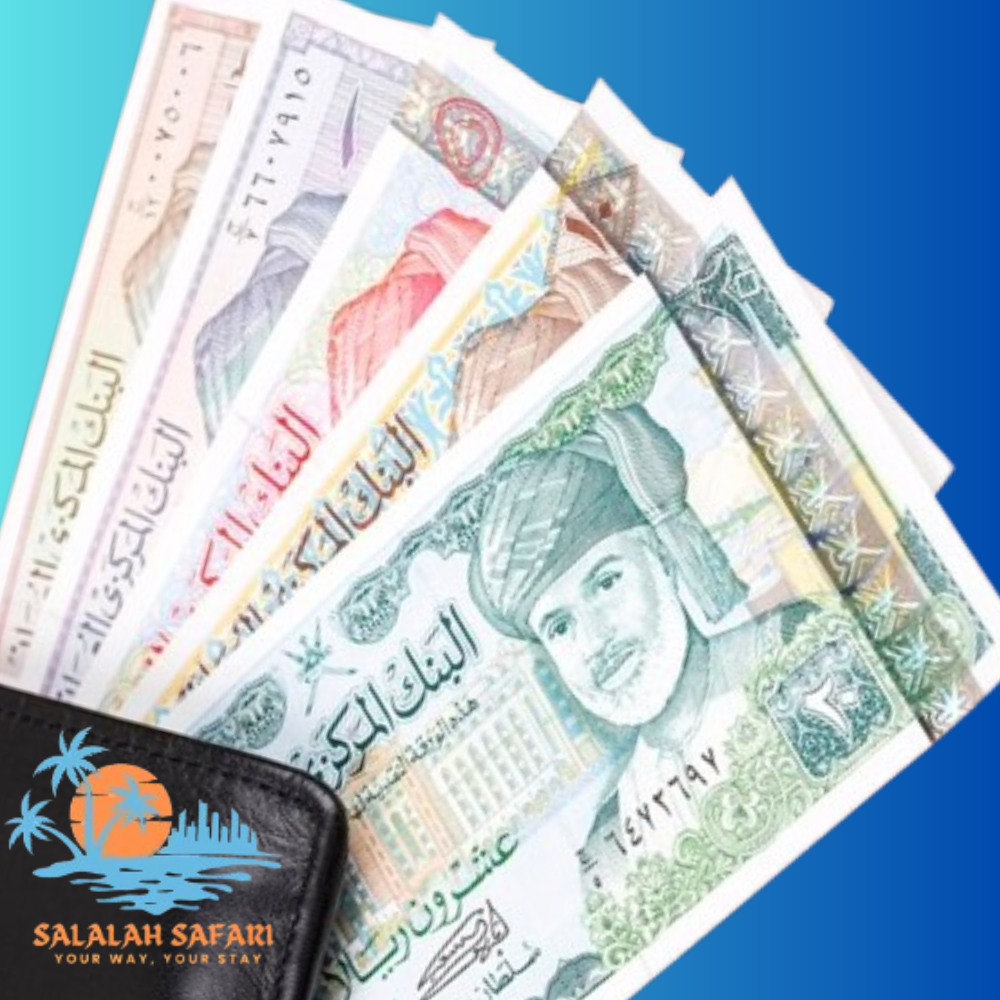Introduction
Oman, a country renowned for its stunning landscapes, cultural heritage, and strategic location in the Arabian Peninsula, is increasingly emerging as a travel and business destination. With its pristine beaches, vast deserts, and modern infrastructure, Oman attracts tourists and investors alike. Its growing influence in the region highlights the importance of understanding the various aspects of the country, including the Currency in Oman, for travelers and investors in Oman.
Oman’s currency, the Omani Rial (OMR), plays a crucial role in facilitating trade, tourism and investment. In any case, if you are thinking to go on Omani for tourism purposes or for doing business it is essential that you have proper knowledge about Currency in Oman.
The Omani Rial, the official Currency in Oman of this charming sultanate, plays a crucial role in facilitating trade, tourism, and investment due to its strong stability in the global market. Oman’s economy, coupled with its prudent fiscal policies, has helped maintain the value of the Currency in Oman. The following lines provide an overview of the historical origins of the Omani Rial and the importance of understanding the Currency in Oman and navigating its nuances. To manage your travel between currency exchange offices, ATMs, and daily expenses in this magical land.
Understanding the Omani Rial (OMR)
History of the Omani Rial
The history of the Omani Rial is intertwined with the nation’s economic and political evolution:
- Before 1970, Oman did not have a single national currency. so, The Indian Rupee (INR) and the Maria Theresa Thaler were used in different parts of the country. In 1970, the Omani Rial was introduced to replace these currencies, as a step towards economic unification and modernization.
- In 1970, following Sultan Qaboos bin Said’s accession, Oman established its own currency to symbolize its sovereignty and economic independence. The Omani Rial was introduced, replacing the Gulf Rupee at a rate of 1 Omani Rial = 2.5 Gulf Rupees.
- Initially named the Rial Saidi in honor of the ruling dynasty, it was renamed the Omani Rial in 1974. Over time, the Currency in Oman became stable and high value due to the country’s oil wealth.
Official Currency of Oman
The Omani Rial (symbol: ر.ع.; code: OMR) is the official currency of the Sultanate of Oman. It is one of the strongest currencies globally, reflecting the country’s stable economy and its reliance on oil revenues.

Subunit:
The Omani Rial is divided into 1,000 baisas, making it unique compared to most other currencies, which are typically divided into 100 smaller units. Coins and banknotes are available in denominations of both rials and baisas, facilitating transactions across various economic levels.
Currency Structure
| Currency | Denominations |
| Banknotes | 100 Baisa, 200 Baisa, ½ Rial, 1 Rial, 5 Rials, 10 Rials, 20 Rials, 50 Rials |
| Coins | 5 Baisa, 10 Baisa, 25 Baisa, 50 Baisa, 100 Baisa, ¼ Rial, ½ Rial |
All Omani banknotes bear the image of the late Sultan Qaboos bin Said Al Said, in honor of his leadership and vision for the nation.
Strength and Stability
Significance
The Omani Rial is not only a medium of exchange but it is as a result of the strength that Oman postures in the economic map of the Gulf Cooperation Council. Its fixed peg to the US Dollar since 1986 (1 OMR ≈ 2.6 USD) has provided stability and facilitated international trade and investment. Further, the export of oil and gas forms a strong pillar of the Currency in Oman. On the flip side, the prudent fiscal policies and sound economic management implemented by the Omani government further bolster the Rial’s stability.
Role of the Central Bank of Oman

Key functions include the Central Bank of Oman (CBO) in managing and regulating the country’s monetary policy and financial systems:
- Issuance of Currency: The CBO is responsible for designing, printing, and circulating the Omani Rial and its subunits, ensuring the availability of a secure and reliable currency in Oman.
- Maintaining Monetary Stability: The CBO manages inflation and exchange rates to ensure the Rial’s purchasing power remains strong.
- Promoting Confidence: State banking policy has control of the money supply and influences the operations of the banking system by establishing investor and public confidence.
The Currency in Oman, under the guardianship of the CBO, is a cornerstone of Oman’s economic stability and a reflection of its rich history and promising future.
Exchange Rates: OMR to Major Currencies
Real-time Exchange Rates:
| Currency | Rate (as of 2024-12-22 10:18:05 +01) |
| USD | 1 OMR = 2.5974 USD |
| EUR | 1 OMR = 2.4908 EUR |
| GBP | 1 OMR = 2.0668 GBP |
Exchange rates fluctuate, and it is advisable to check real-time rates using reliable sources.
Factors Affecting Exchange Rates
- Economic conditions: Relative inflation rates, interest rates, and economic growth between countries can significantly impact currency values.
- Political stability: Stable governance boosts investor confidence and currency value.
- Global market trends: Changes in oil prices, significantly affect the OMR’s exchange rates.
- Supply and demand: The supply and demand for a particular currency in the foreign exchange market can also influence its value.
- Additionally, global economic trends, such as inflation or recession, can impact currency valuations.
Using the Omani Rial in Oman
Currency Exchange
The most secure option is through operational banks and licensed exchange bureaus. Popular exchange bureaus include:
- Oman UAE Exchange
- Travelex Oman
- Al Ansari Exchange
- Al Jadeed Exchange
- Musandam Exchange
- Oman International Exchange
- Hamdan Exchange
- Asia Express Exchange
Tips for Best Rates & Avoiding Scams:
- Compare rates at some places (like banks, and bureaus) before exchanging your Currency in Oman.
- Stick to reputable banks and licensed bureaus.
- Count your Omani Rials before leaving the exchange counter.
- Another thing to watch out for is unusually high rates This is often a sign of a scam.
- Check for commission or service charges.
- There exist online tools known as a Currency Converter, which one should use in order to avoid being overcharged.
- To be on the safe side one should compare the rates of different exchange bureaus with the aim of coming up with the right exchange rate deal.
- to be peace of mind Always check the current market rate before exchanging and ensure transparency in fees.
ATMs
ATMs are widely available throughout Oman, particularly in major cities such as Muscat, Salalah, and Nizwa, as well as in tourist areas.
Major banks providing ATM services include:
- Ahli Bank
- Bank Dhofar
- Bank Muscat
- Bank of Baroda
- HSBC
Tips for using ATMs in Oman
- withdrawal fees can vary depending on your home bank and the ATM operator.
- Some ATMs may impose withdrawal limits, so plan accordingly.
- Take cash from well-lit areas with secure available ATMs and environments like banking halls and shopping centers respectively.
Credit Cards
Credit cards are widely accepted in Oman, especially in hotels, restaurants, and major retail outlets. The most commonly accepted card networks include:
- Visa
- Mastercard
- American Express
- Keep some cash on hand for smaller establishments or remote areas where card payments might not be accepted.
Tips for Using Currency in Oman
Budgeting
Planning your budget is essential for a smooth trip to Oman. Consider the following costs:
- Accommodation: Costs vary greatly depending on your preferred style.
- Transportation: Internal flights are a convenient option for longer distances. Consider renting a car for exploring, Public transportation is available in major cities.
- Food: Dining can vary from high-end restaurants to affordable local eateries.
- Activities: Excursions like desert safaris, diving, and cultural tours should be included in your budget.
Estimate your daily expenses for accommodation, food, transportation, and activities, because this will help you stay on track and avoid overspending.
Bargaining
Bargaining is a common practice in Oman, especially in souqs (traditional markets) and smaller shops. Here are some tips:
- Bargaining is generally expected in souqs and local markets.
- bargaining is a cultural norm and should be approached in good spirit.
- Start by offering a price lower than what you are willing to pay and negotiate upwards.
- Enjoy the process and be prepared to walk away if you’re not satisfied.
- A positive and friendly approach can often lead to a more agreeable outcome.
fortunately, in malls or larger retail outlets, the prices are fixed.
Tipping
Tipping in Oman is appreciated but not mandatory
- Restaurants: Tipping is generally appreciated.
- Hotels: Tipping porters and room service is customary.
- Taxi Drivers: Tipping is not always expected but appreciated for exceptional service.
Cost of Living in Oman
General Overview
The cost of living in Oman is relatively moderate compared to other Gulf Cooperation Council (GCC) countries. While some aspects, such as accommodation and dining, maybe on par with regional standards, Oman’s overall affordability makes it an attractive destination for travelers and expatriates.
the following table can help you understand the cost of living, so you can better plan your expenses and make the most of your time in Oman:
| Category | Options | Cost Range (OMR) |
| Accommodation | Budget-Friendly (Guesthouses & Mid-range Hotels) | 20 – 50 |
| Accommodation | Luxury Hotels (Resorts & International Chains) | 100 – 300 |
| Accommodation | Long-term Rentals (Expatriates) | 200 – 700 (Monthly) |
| Food | Local Restaurants | 2 – 5 |
| Food | Cafes & Fast Food | 3 – 8 |
| Food | Fine Dining | 15 – 30 (Per Person) |
| Transportation | Taxis | Starting Fare: ~1 OMR + Distance-Based Charges |
| Transportation | Buses (Intercity) | 3 – 5 (Longer Routes) |
| Transportation | Car Rentals | 10 – 30 (Daily) |
Travel Money in Oman
Cash vs. Cards
| Feature | Cash | Credit Cards |
| Advantages |
|
|
| Disadvantages |
|
|
Transportation Costs
Transportation in Oman is accessible and varied:
- Taxis: Starting fares are around 1 OMR, with additional charges based on distance.
- Buses: Intercity buses are affordable, costing around 3 to 5 OMR for longer routes.
- Car Rentals: Daily rental rates range from 10 to 30 OMR, depending on the vehicle type and rental company.
Conclusion
In conclusion, This previous data offers an overall view of the various considerations with the employ of the Currency in Oman from currency exchange and ATM accessibility, utilization of credit cards, tips when it comes to the right budget, and the cost of living in Oman. both travelers and expatriates to manage their finances effectively while enjoying all that Oman has to offer.
At the last, we welcome you to provide your own experiences of using the currency in Oman in the comment section below. Did you have any difficulties, or did you have any tricks up your sleeves? We are equally open to answering any questions you might have concerning the Currency in Oman or anything else you want to know about Oman.
I hope this information about Currency in Oman will be helpful when you are going to plan your travel to Oman!
















